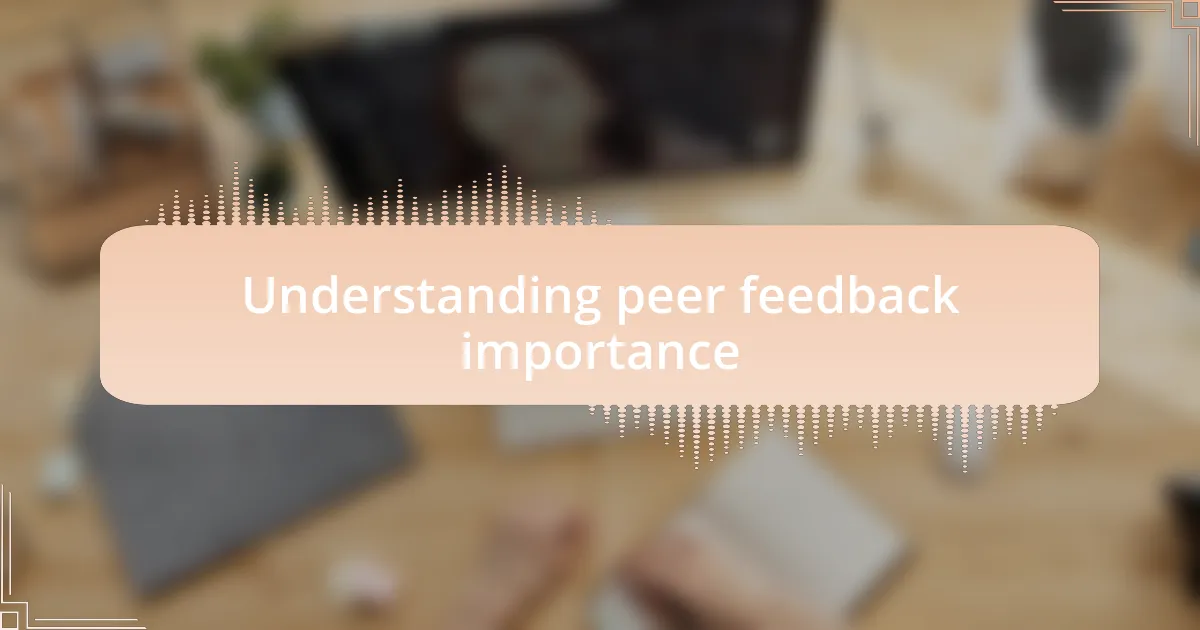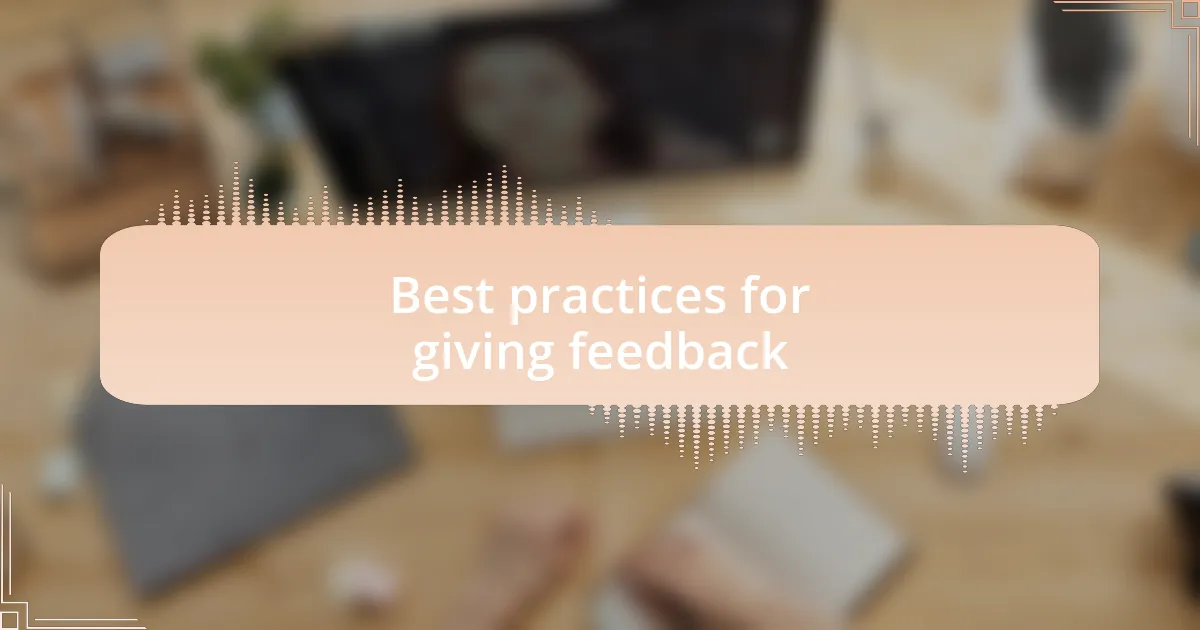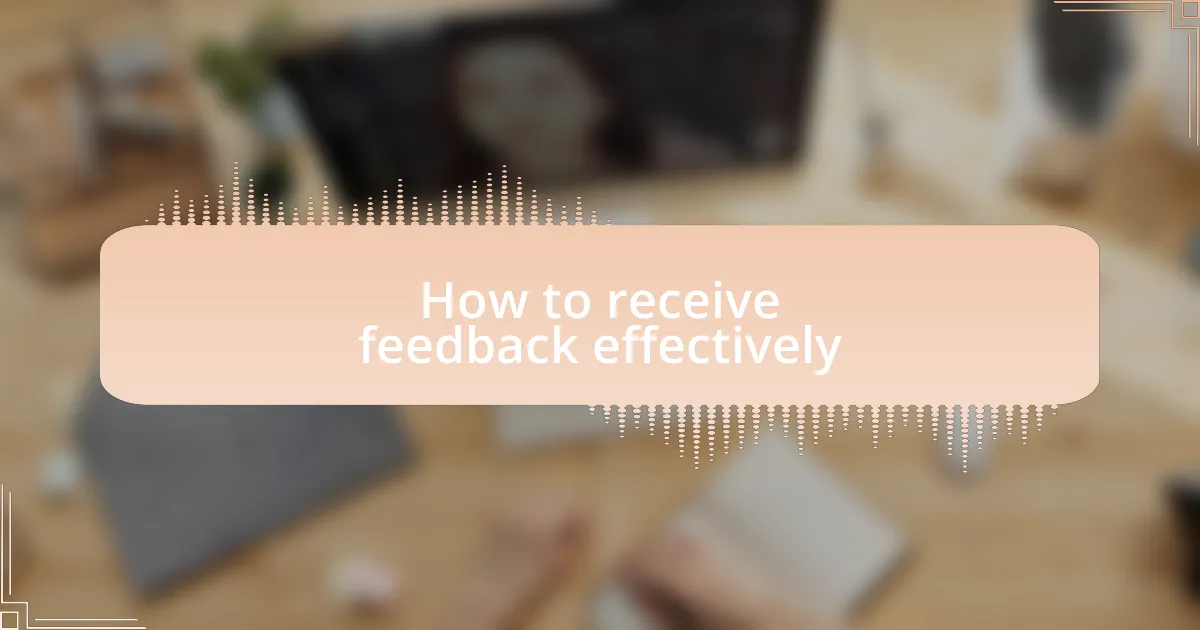Key takeaways:
- Peer feedback fosters collaboration, trust, and enhances clinical effectiveness through honest exchanges.
- Constructive feedback should be framed positively, specific, and timely to maximize its impact.
- Receiving feedback effectively involves maintaining an open mindset, asking clarifying questions, and reflecting afterward.

Understanding peer feedback importance
Understanding the importance of peer feedback in clinical education goes beyond simply receiving critiques from colleagues. I recall a time during my own training when a peer’s honest feedback illuminated blind spots I hadn’t recognized. Without that candid exchange, I might have continued to make the same mistakes, hindering my growth.
Engaging in peer feedback fosters a culture of collaboration and trust. I find it fascinating how sharing strengths and weaknesses not only strengthens our skills but also builds relationships. When was the last time you felt truly heard by a peer? That connection can transform a feedback session into a valuable learning experience for everyone involved.
Furthermore, peer feedback encourages reflective practice, which is crucial in clinical settings. By discussing our approaches, I’ve noticed how perspectives can shift, leading to innovative solutions. Have you ever experienced that “aha” moment after a colleague’s insight? It’s those moments that redefine our understanding and enhance our clinical effectiveness.

Best practices for giving feedback
Giving feedback isn’t just about pointing out what someone did wrong; it’s essential to frame it constructively. I remember receiving feedback on a clinical presentation that focused not only on areas for improvement but also highlighted what I did well. That approach made it easier to absorb the suggestions and implement them. Have you noticed how a positive framing can motivate a colleague to strive for excellence instead of feeling defensive?
Another best practice is to be specific and focused in your feedback. Vague comments can lead to confusion and frustration. Once, I gave a peer feedback on their patient interaction skills by pointing out exact phrases that worked and those that fell flat. It was rewarding to see them implement those changes and witness the immediate impact on their patient rapport. Have you tried providing specific examples in your feedback? It’s a game-changer.
Lastly, timing can make all the difference in how feedback is received. I’ve found that delivering feedback shortly after an experience is often more effective than waiting too long. Recently, after a team meeting, I shared my thoughts on how we could communicate more clearly, and the discussion turned into a brainstorming session. Have you experienced that synergy when the timing is just right? It makes feedback feel less like an obligation and more like a collaborative effort toward improvement.

How to receive feedback effectively
Receiving feedback effectively requires an open mindset. I vividly remember a situation where I had to accept criticism from a mentor. Initially, I felt defensive, but as I began to listen actively and process their insights, I realized that their guidance could genuinely enhance my skills. Have you ever felt that inner resistance to feedback? The moment I shifted from defensiveness to an eagerness to learn, the experience transformed.
Another crucial aspect is to ask clarifying questions. When I received feedback on my surgical technique, I didn’t just nod in agreement; instead, I asked, “Could you elaborate on that specific step?” This interaction not only helped me understand the feedback better, but it also demonstrated my commitment to growth. This is your opportunity to dig deeper—what’s the best question you could ask to turn vague feedback into actionable insights?
Finally, reflect on the feedback after it’s given. After a session where I received mixed responses from peers, I took time to journal my thoughts. This reflection allowed me to process the suggestions and identify themes in the feedback. Have you ever tried this approach? It can be eye-opening, helping you recognize patterns and prioritize areas for improvement, ultimately leading to your professional development.